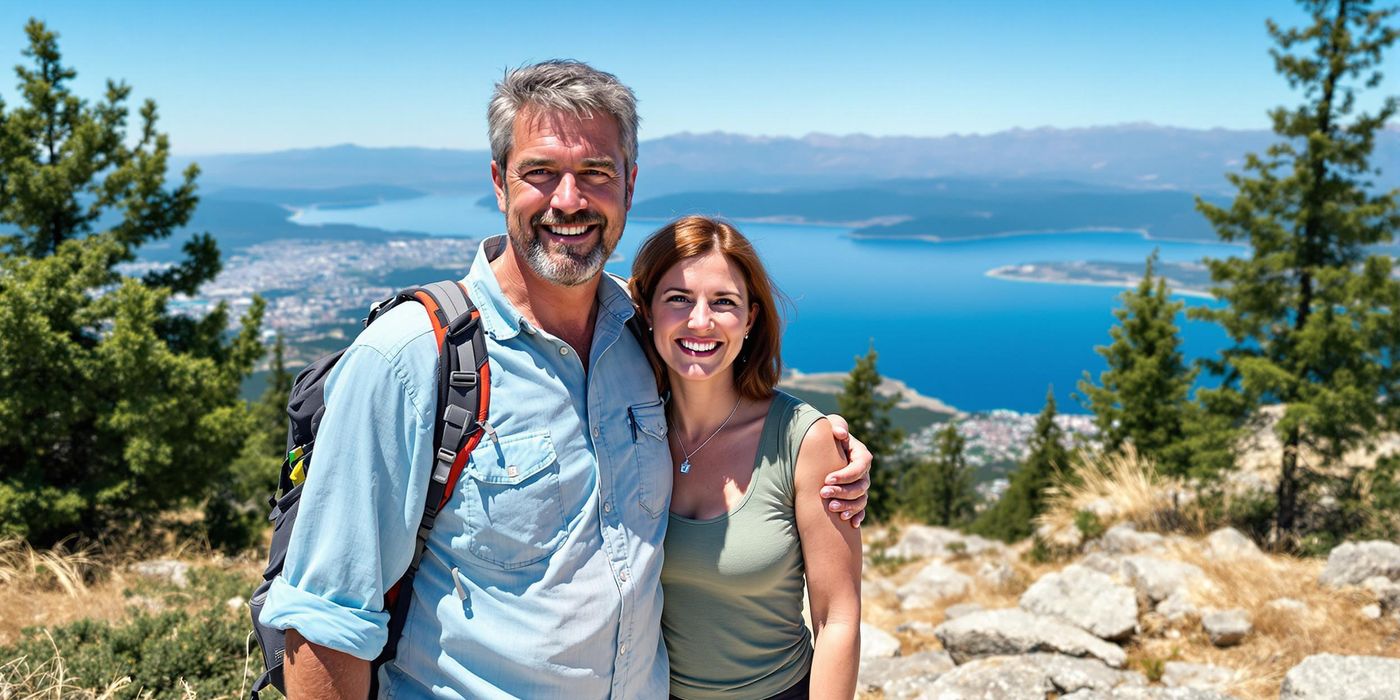Hello fellow adventurers! James here, your friendly neighbourhood brewery tour guide and hiking enthusiast. Living in Kelowna, I'm spoiled for choice when it comes to stunning trails and breathtaking views. Over the years, Olivia and I have learned a thing or two about making the most of our hikes, and I'm excited to share some of that wisdom with you. So, lace up your boots, grab your backpack, and let's dive into the joy of hiking!
Choosing the Right Trail: Okanagan Valley Gems
The Okanagan Valley is a hiker's paradise, offering trails for every skill level. From leisurely strolls to challenging climbs, there's something for everyone. Olivia and I have spent countless weekends exploring these gems, each hike leaving us with unforgettable memories.
One of our go-to spots is Knox Mountain. It's a relatively easy hike with rewarding panoramic views of Kelowna and Okanagan Lake. We often take a picnic and enjoy lunch at the summit. For something a bit more challenging, Rattlesnake Point offers a steeper climb and stunning views of Kalamalka Lake. Just be mindful of the name – keep an eye out for wildlife!
For a relaxed, family-friendly option, the Kettle Valley Rail (KVR) Trail is perfect. This historic railway line has been converted into a scenic trail that winds through vineyards, orchards, and along the lake. It's mostly flat, making it ideal for families with young children or those looking for a leisurely walk. There are many access points close to Kelowna, making it a great choice for a quick escape into nature.
Gear Essentials: My Tried-and-True Hiking Kit
Having the right gear can make or break your hiking experience. Over the years, I've curated a kit that's both reliable and comfortable, perfect for the Okanagan's diverse terrain.
First and foremost, invest in a good pair of hiking boots. Look for something with ankle support and a comfortable fit. I'm a big fan of Salomon boots; they've never let me down. Pair them with moisture-wicking socks to prevent blisters. Trust me, happy feet make for a happy hike!
Clothing layers are also essential. The weather in the Okanagan can change quickly, so it's important to be prepared for anything. I always pack a lightweight, waterproof jacket, a fleece or sweater, and a moisture-wicking base layer. Don't forget a hat and sunglasses – even on cloudy days, the sun can be intense.
For backpacks, I swear by Osprey. They're durable, comfortable, and have plenty of storage. Trekking poles can be a lifesaver on steep inclines, especially when carrying a heavy pack. Black Diamond makes some excellent, lightweight options. And of course, a reliable navigation tool is a must. I prefer a traditional map and compass, but a GPS device can also be helpful.
Safety First: Tips for a Worry-Free Hike
Safety should always be your top priority when hiking. A little planning and preparation can go a long way in ensuring a worry-free experience.
Before heading out, always check the weather forecast. The Okanagan can experience sudden changes in weather, so it's important to be aware of any potential hazards. Inform someone of your hiking plans, including your route and estimated return time. This way, if something does go wrong, someone will know where to look for you.
Carry a well-stocked first-aid kit, including essentials like bandages, antiseptic wipes, pain relievers, and blister treatment. Knowing how to navigate using a map and compass is also crucial. If you do get lost, stay calm and try to retrace your steps. If that's not possible, stay put and wait for help.
The Okanagan is home to a variety of wildlife, including bears. It's important to be aware of your surroundings and take precautions to avoid encounters. Make noise while hiking to alert animals to your presence. Carry bear spray and know how to use it. If you do encounter a bear, remain calm, avoid direct eye contact, and slowly back away.
Route Planning: Making the Most of Your Time
Proper route planning is essential for a successful and enjoyable hike. Take the time to research your chosen trail and familiarize yourself with the terrain and potential hazards.
Start by consulting reliable trail maps and resources. Websites like AllTrails and local hiking guides can provide valuable information about trail difficulty, elevation gain, and user reviews. Consider the fitness level of your group when choosing a trail. Don't overestimate your abilities – it's better to start with an easier hike and gradually increase the difficulty as you gain experience.
Calculate the estimated duration of your hike, factoring in elevation gain, terrain, and the pace of your group. Add extra time for breaks and unexpected delays. Identify potential hazards along the route, such as steep drop-offs, river crossings, or wildlife encounters. Also, identify potential emergency exit points in case you need to cut your hike short.
Essential hiking tips for Okanagan Valley trails. Gear, safety, and planning advice from a Kelowna local.









